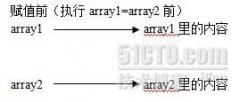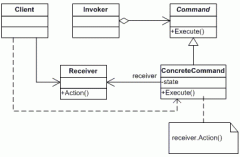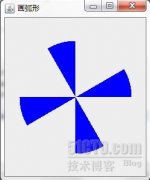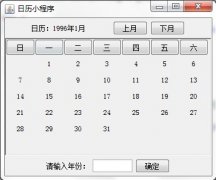详细介绍JAVA中的字符串
Java语言中,把字符串作为对象来处理,类String和StringBuffer都可以用来表示一个字符串。(类名都是大写字母打头)
1.字符串常量
字符串常量是用双引号括住的一串字符。
"Hello World!"
2.String表示字符串常量
用String表示字符串:
- String( char chars[ ] );
- String( char chars[ ], int startIndex, int numChars );
- String( byte ascii[ ], int hiByte );
- String( byte ascii[ ], int hiByte, int startIndex, int numChars );
String使用示例:
- String s=new String() ; 生成一个空串
下面用不同方法生成字符串"abc":
- char chars1[]={''a'',''b'',''c''};
- char chars2[]={''a'',''b'',''c'',''d'',''e''};
- String s1=new String(chars1);
- String s2=new String(chars2,0,3);
- byte ascii1[]={97,98,99};
- byte ascii2[]={97,98,99,100,101};
- String s3=new String(ascii1,0);
- String s4=new String(ascii2,0,0,3);
3.用StringBuffer表示字符串
- StringBuffer( ); /*分配16个字符的缓冲区*/
- StringBuffer( int len ); /*分配len个字符的缓冲区*/
- StringBuffer( String s ); /*除了按照s的大小分配空间外,再分配16个字符的缓冲区*/
4、访问字符串
(1)类String中提供了length( )、charAt( )、indexOf( )、lastIndexOf( )、getChars( )、getBytes( )、toCharArray( )等方法。
- public int length() 此方法返回字符串的字符个数
- public char charAt(int index) 此方法返回字符串中index位置上的字符,其中index 值的 范围是0~length-1
- public int indexOf(int ch)
- public lastIndexOf(in ch)
返回字符ch在字符串中出现的第一个和最后一个的位置
- public int indexOf(String str)
- public int lastIndexOf(String str)
返回子串str中第一个字符在字符串中出现的第一个和最后一个的位置
- public int indexOf(int ch,int fromIndex)
- public lastIndexOf(in ch ,int fromIndex)
返回字符ch在字符串中位置fromIndex以后出现的第一个和最后一个的位置
- public int indexOf(String str,int fromIndex)
- public int lastIndexOf(String str,int fromIndex)
返回子串str中的第一个字符在字符串中位置fromIndex后出现的第一个和最后一个的位置。
- public void getchars(int srcbegin,int end ,char buf[],int dstbegin)
srcbegin 为要提取的第一个字符在源串中的位置, end为要提取的最后一个字符在源串中的位置,字符数组buf[]存放目的字符串,dstbegin 为提取的字符串在目的串中的起始位置。
- public void getBytes(int srcBegin, int srcEnd,byte[] dst, int dstBegin)
参数及用法同上,只是串中的字符均用8位表示。
(2).类StringBuffer提供了 length( )、charAt( )、getChars( )、capacity()等方法。
方法capacity()用来得到字符串缓冲区的容量,它与方法length()所返回的值通常是不同的。
5、修改字符串
修改字符串的目的是为了得到新的字符串,类String和类StringBuffer都提供了相应的方法。有关各个方法的使用,参考java 2 API。
(1)String类提供的方法:
- concat( )
- replace( )
- substring( )
- toLowerCase( )
- toUpperCase( )
- public String contat(String str);
用来将当前字符串对象与给定字符串str连接起来。
- public String replace(char oldChar,char newChar);
用来把串中出现的所有特定字符替换成指定字符以生成新串。
- public String substring(int beginIndex);
- public String substring(int beginIndex,int endIndex);
用来得到字符串中指定范围内的子串。
- public String toLowerCase();
把串中所有的字符变成小写。
- public String toUpperCase();
把串中所有的字符变成大写。
(2)StringBuffer类提供的方法:
- append( )
- insert( )
- setCharAt( )
如果操作后的字符超出已分配的缓冲区,则系统会自动为它分配额外的空间。
- public synchronized StringBuffer append(String str);
用来在已有字符串末尾添加一个字符串str。
- public synchronized StringBuffer insert(int offset, String str);
用来在字符串的索引offset位置处插入字符串str。
- public synchronized void setCharAt(int index,char ch);
用来设置指定索引index位置的字符值。
注意:String中对字符串的操作不是对源操作串对象本身进行的,而是对新生成的一个源操作串对象的拷贝进行的,其操作的结果不影响源串。
相反,StringBuffer中对字符串的连接操作是对源串本身进行的,操作之后源串的值发生了变化,变成连接后的串。
6、其它操作
(1)字符串的比较
String中提供的方法:equals( )和equalsIgnoreCase( )
它们与运算符''= =''实现的比较是不同的。运算符''= =''比较两个对象是否引用同一个实例,而equals( )和equalsIgnoreCase( )则比较两个字符串中对应的每个字符值是否相同。
(2)字符串的转化
java.lang.Object中提供了方法toString( )把对象转化为字符串。
(3)字符串"+"操作
运算符''+''可用来实现字符串的连接:
- String s = "He is "+age+" years old.";
其他类型的数据与字符串进行"+"运算时,将自动转换成字符串。具体过程如下:
- String s=new StringBuffer("he is").append(age).append("years old").toString();
注意:除了对运算符"+"进行了重载外,java不支持其它运算符的重载。
转自51CTO开发频道
相关新闻>>
- 发表评论
-
- 最新评论 进入详细评论页>>






